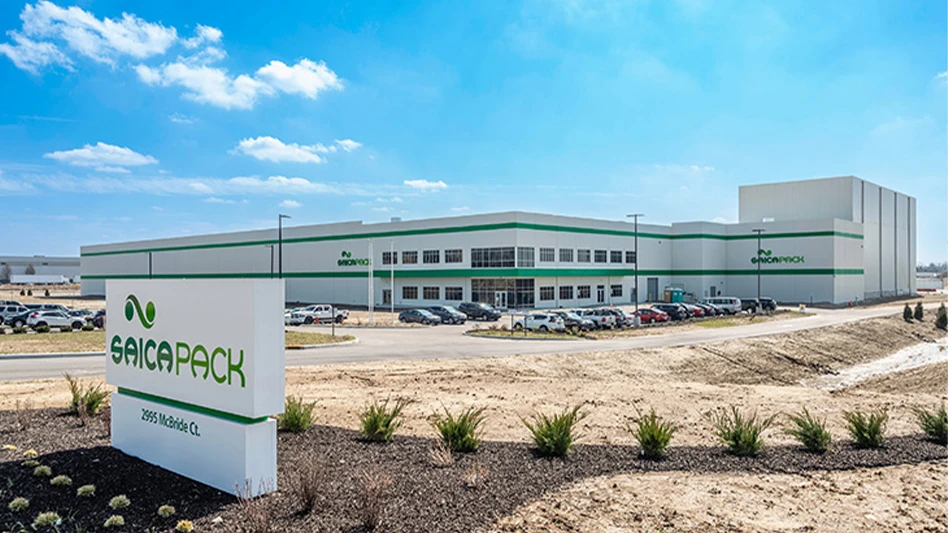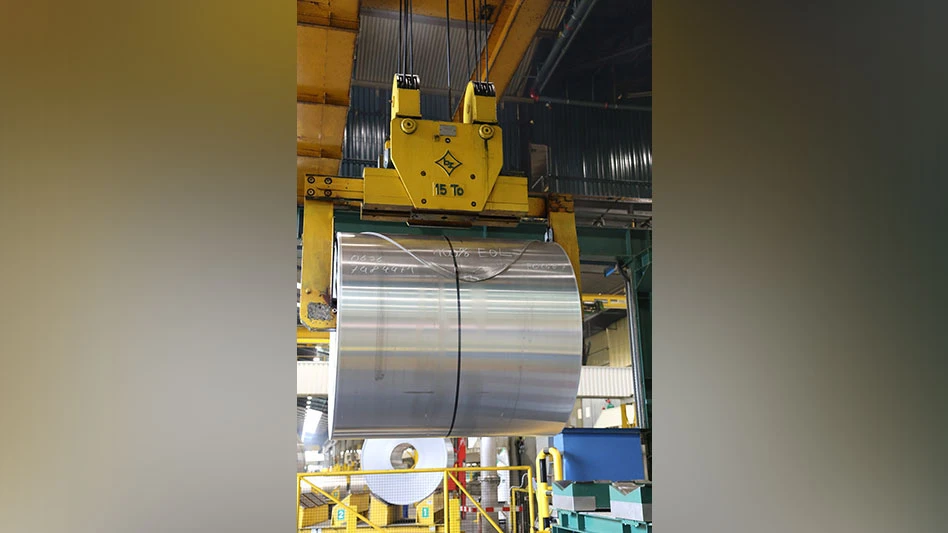Sports writer John Feinstein once began a presentation with a little story about a mother who was at the beach with her baby boy. In an instant when she wasn’t looking a wave suddenly came in a swept away the toddler. The mother became hysterical and then began to pray. She pleaded, “Oh God, I will do anything that you ask if you will just return my child unharmed.” And then lo and behold the next wave rolled in and there was the baby boy, choking but alive. The mother rushed up to the child, picked him up in her arms and looked heavenward and said (indignantly), “He had a hat!”
At the risk of stretching things a bit too much, there are some lessons from the little story that can relate to the paper recycling industry. Perhaps some of us here have seen customers swept away in an instant when we weren’t paying attention-or even if we were. And perhaps some of us have prayed that the business we lost would come back to us—yet if it does it probably does not come back with its hat.
Let’s be honest with each other: the landscape of the recycled paper industry has changed more in the past five years—and will continue to do so for the next five years—than it has in the prior 50 years.
Why do I say this? Three reasons: First, new technology and communication systems that help management to process ever increasing amounts of information have facilitated more consolidations. Certainly, the speed of modern communication has minimized the vital role that “middle men” have played for centuries as providers of vital intelligence. Thus, there is a trend to minimize the role of the pure broker in the secondary fiber industry.
Second, economies of scale and the benefits of market dominance have become so apparent, and therefore so compelling, that any major company CEO must be looking at getting bigger—or getting bought. There is a relationship between the first two points, but there should be no illusion that modern communications have caused consolidation.
CONSOLIDATION, OLD SCHOOL
Consolidation is plain old good business and the man who wrote the textbook on this was John D. Rockefeller. I’m sure most of you know the history of John D. Rockefeller, the founder of Standard Oil, and you know that this man was the most prolific consolidator in the world. Standard Oil, which only began around the time of the Civil War, ended up controlling more than 75% of the U.S. petroleum market by the turn of the century. Rockefeller built his fortune by buying up a myriad of small and medium sized refineries. It is hard to believe that in the late 19th century that major cities often had scores of refineries, many of which were “mom and pop” operations refining a few hundred barrels of oil at a time.
It was a raucous market with frequent swings in the market price of crude oil. This sounds strangely familiar as we now have $35 per ton OCC when it was three times this amount just a year ago. Some of us also remember cities with several “mom and pop” recycling operations.
In the consolidation of the oil industry, Rockefeller would frequently lower prices and force smaller competitors to sell to him or go out of business. It is one of the ironies of consolidation that in the building of market dominance, prices may go down, not up.
Rockefeller employed this tactic to not only force his competitors to sell at distressed prices but to spur new industries, such as the automobile, to use more of his product.
It should be noted that Rockefeller accomplished this consolidation while communication was done with a pen and telegraph—and perhaps a telephone near the end of his era. Consequently, today's electronic media can be said to aid consolidation, but it is not the cause. Rockefeller died in 1937 at the age of 98. It is astounding to think that 60 years after his death the four Standard Oil companies—Exxon, Mobil, Amoco and Chevron—were 4 of the 50 largest companies in the world. And further consolidation among those companies continues to take place.
This leads me to the third reason that our paper industry is changing so rapidly now. The U.S. government is not nearly as concerned about market consolidation as it was in the past. While Rockefeller was pursued by government “trustbusters” and what we would today call “activists,” the U.S. federal government has recently taken a more benign view towards consolidation in various industries. This seems to reflect the modern thinking that innovation is constant and market dominance is ephemeral at best.
For example, 25 years ago most grocery stores utilized paper bags and there would have been real concern if International Paper purchased Champion and Union Camp. Today, that market is about 85% plastic so the concentration of the sack kraft producers is almost meaningless.
If the newsprint industry consolidates today it is less important in a world where electronic media and television are major competitors to newspapers. In corrugated, does the government care about Smurfit buying Stone and then buying St. Laurent when the box business is under increased threats from alternative shipping systems like returnable plastic crates and shrink wraps?
A DIFFERENT ENVIRONMENT
All of this consolidation will change procurement and marketing in the secondary fiber industry. As an example, our company has handled the returns from magazine distributors. It was not a huge piece of our business, but it all added up.
In the early 1990s, grocery store chains started to consolidate. In 1995, Safeway announced that it wanted to deal with one magazine wholesaler for an entire region. The pressure was now on the distributors to grow by acquisition. In the space of five years, 180 independent wholesalers were gobbled up. The four major survivors in that industry, Anderson, Chas. Levy Circulating Co., Hudson News, and News Group, now control more than 80% of the magazine distribution in the country. News Group went from just 3% market share in 1995 to 27% today. And you know the interesting fact? None of the big four is really making any money—the competition is just too withering.
But look at what it has done to the secondary fiber market. Not only do the big four want to deal generally on a national basis, they also have become more sophisticated about returns and are starting to limit the number of copies their newsstands accept in the first place. The consequence is that for better or worse, there will be fewer returns and generally only dealers or mills handling these returns will be the largest, national paper companies.
So the bottom line for the next few years is: look for more consolidation and fewer customers and suppliers. This consolidation will have an effect on the recycling industry and particularly the “mom and pops” and the mid-size independents.
On the mill side, in good humor, I think that the recycling industry is facing three options when it comes to the mill industry, especially as relates to their best mill customer:
1. Your best mill can be bought by its bigger competitor and they can tell you that they now have their own recycling division and they don’t really need your supply any longer.
2. Your best mill can (A) be shut down either by the current owner because they can’t make money due to withering competition and rising costs or (B) the mill can be shut down by the new owner because the mill needs to be “rationalized” in the bigger company’s bigger system; or
3. Your mill can be purchased by a “Wannabe” bigger company that has no money, but is delighted to buy from you, but just isn’t sure it can pay you.
In high school, we learned that this was a Hobson’s Choice; that is no matter what you choose, you’re a loser!
NEW STRATEGIES
So what has Canusa Corp. chosen to do in light of this “reality” that surrounds us? One tactic we have chosen is to diligently pursue good partnerships.
There is a risk in this type of alliance. At any given moment, any of us could fall prey to shall we say, “an offer we cannot refuse.” In an instant one of our partners could be swept out to sea—and whether they would ever return with or without a hat would remain to be seen. Three of our partnerships are particularly interesting and each has its own dynamic force that could tilt it in one direction or another.
In 1989 we pioneered a joint venture with The Washington Post, to build a recycling facility to process the curbside collection from Washington, D.C. and surrounding counties.
Sponsored Content
Labor that Works
With 25 years of experience, Leadpoint delivers cost-effective workforce solutions tailored to your needs. We handle the recruiting, hiring, training, and onboarding to deliver stable, productive, and safety-focused teams. Our commitment to safety and quality ensures peace of mind with a reliable workforce that helps you achieve your goals.
Sponsored Content
Labor that Works
With 25 years of experience, Leadpoint delivers cost-effective workforce solutions tailored to your needs. We handle the recruiting, hiring, training, and onboarding to deliver stable, productive, and safety-focused teams. Our commitment to safety and quality ensures peace of mind with a reliable workforce that helps you achieve your goals.
Sponsored Content
Labor that Works
With 25 years of experience, Leadpoint delivers cost-effective workforce solutions tailored to your needs. We handle the recruiting, hiring, training, and onboarding to deliver stable, productive, and safety-focused teams. Our commitment to safety and quality ensures peace of mind with a reliable workforce that helps you achieve your goals.
Sponsored Content
Labor that Works
With 25 years of experience, Leadpoint delivers cost-effective workforce solutions tailored to your needs. We handle the recruiting, hiring, training, and onboarding to deliver stable, productive, and safety-focused teams. Our commitment to safety and quality ensures peace of mind with a reliable workforce that helps you achieve your goals.
Sponsored Content
Labor that Works
With 25 years of experience, Leadpoint delivers cost-effective workforce solutions tailored to your needs. We handle the recruiting, hiring, training, and onboarding to deliver stable, productive, and safety-focused teams. Our commitment to safety and quality ensures peace of mind with a reliable workforce that helps you achieve your goals.
Our joint company, called Capitol Fiber, is still going strong. Going forward, we know that municipal recycling is moving towards single stream and should this happen it may not fit our objectives of enhancing old newspaper recycling for the Post readership. Consequently, we are exploring another partnership with a newsprint producer that would like to expand its collection of old newspapers the “old fashioned way,” i.e. through school and religious and civic drop-off programs. Believe it or not, in our demographic area this may just work.
Canusa’s relationship with Encore Paper Co. in South Glens Falls, N.Y., is another innovative partnership. Encore is a freestanding former James River mill making various grades of towel and tissue for the away from home market. This mill, which is owned by investors mostly from Chicago, is in an industry dominated by giants.
When Canusa met Encore, the company’s management had successfully found a way to garner sufficient sales by providing superior service and creating specialty grades. However, they knew that their fiber costs were making them less profitable than their competitors. So how was Encore to compete for fiber in the landscape? By partnering with Canusa, Encore was able to get an “inside look” at the real cost of fiber. Instead of Encore needing a waste paper division like some of its larger rivals, or investing huge sums of money into the latest and most expensive de-inking technology, it was able to piggy back Canusa’s knowledge and market presence to its advantage.
Canusa’s dozen traders of fiber in offices from Eastern Canada through North Carolina were able to provide good ideas on new fiber sources at market credible prices. We were also able to marshal large amounts of tonnage on short notice if the mill (for customer reasons or equipment reasons) needed to make a sudden shift in its furnish. This may have been impossible—or certainly more difficult—in a scenario where the mill only employed a single purchasing agent.
The last relationship that I would like to touch on relative to Canusa is our partnership with Bay State Paper Co., Boston. This relationship is in some respects the most complete because we are involved not only in the procurement of the fiber for the mill but also in selling the output of the mill through our joint venture company called BSC Corr Value.
Bay State’s owners took the old Patriot Paper Co., a failed de-inked based fine paper mill in Boston, and turned it into a producer of recycled Kraft papers including bag Kraft, corrugating medium and linerboard.
Canusa had a brokerage division already selling containerboard and a secondary fiber division, so logic developed that we might be perfect partners since we could wrap around the mill on both procurement and sales.
Consequently, after three years of running on their own with a traditional mill procurement model, Bay State invited us in. Their carrot was to pay us extra if we could procure fiber at a total head box value that was better than what they had accomplished on their own. This was a smart structure by the mill because it placed the incentive on value, not merely price. If one buys OCC at a low price but it contains a lot of trash that never can get turned into paper, then the value to the mill may not be very high.
On the other hand, if we could develop a plan to use Asian OCC and retain the fibers in one of our grades then this might deliver value to the mill—even though we were paying the highest price in the market for Asian corrugated. Consequently, this program has not made us the enemy (we hope) of the suppliers to the mill but rather their partners since we both know how the game is played and we both want long-term “win-win” relationships based upon value.
So, in conclusion, the trend in procurement and marketing of secondary fiber is for the large to get larger and for everyone’s customer base to shrink. I suggest that you pick good partners and work your hardest to satisfy their needs. However, in the end a consolidating industry is like a horse race: only the top three horses finish in the money. You need to think carefully about which horses and which customers you want to bet on. Of course, at the finish line, intelligence may have nothing to do with it—like a horse race, it may all come down to luck.
The author is president of Canusa Corp., a Baltimore-based paper recycling company.
Get curated news on YOUR industry.
Enter your email to receive our newsletters.

Explore the July 2001 Issue
Check out more from this issue and find your next story to read.
Latest from Recycling Today
- Steel Dynamics cites favorable conditions in Q1
- Hydro starts up construction in Spain
- Green Cubes unveils forklift battery line
- Rebar association points to trade turmoil
- LumiCup offers single-use plastic alternative
- European project yields recycled-content ABS
- ICM to host colocated events in Shanghai
- Astera runs into NIMBY concerns in Colorado






